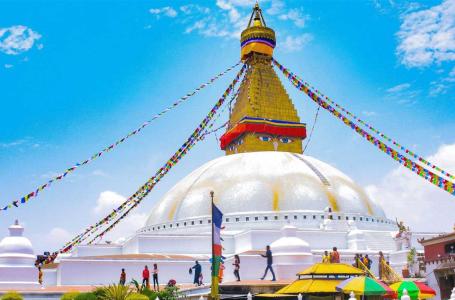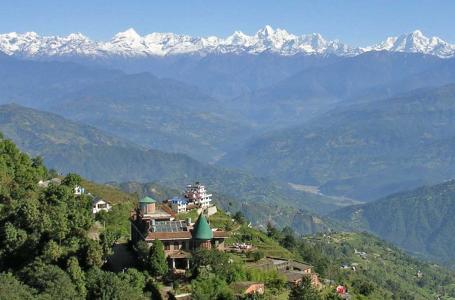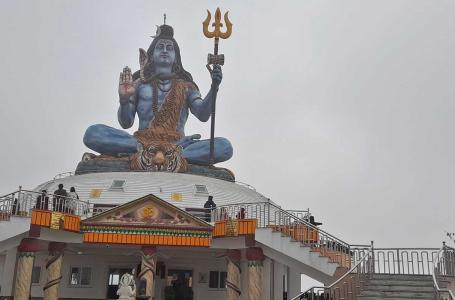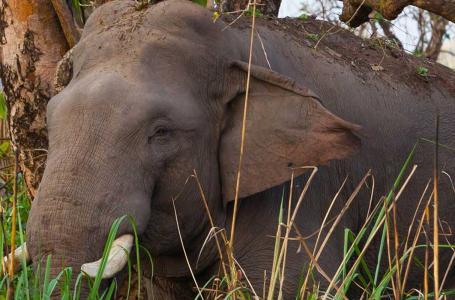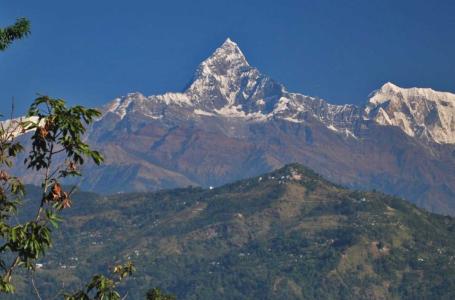Singu Chuli Peak Climbing
Peak Climbing
29 Days
USD 4500
- 01 Pax USD 4500 pp
- 02 to 05 Pax USD 4000 pp
- 06 to 10 Pax USD 3500 pp
- 11 to 15 Pax USD 3000 pp
Itinerary
Your journey to conquer Singu Chuli Peak begins with your arrival in Kathmandu, the vibrant capital city of Nepal. Upon landing, our team will warmly welcome you at the airport and assist you with the necessary arrangements for your expedition. Spend the rest of the day preparing for your adventure, ensuring you have all the required gear and permits for the climb.
Embark on a scenic drive from Kathmandu to Pokhara, a charming lakeside city renowned for its breathtaking views of the Annapurna and Machhapuchhre (Fishtail) mountains. Check into your hotel upon arrival and unwind amidst the tranquil surroundings, preparing yourself for the upcoming trekking journey.
After a hearty breakfast, drive to Nayapul, the starting point of your trek. Begin your trekking adventure by following the trail towards Ulleri, a picturesque village nestled amidst lush greenery and terraced fields. Traverse through rhododendron forests and quaint hamlets, immersing yourself in the natural beauty of the Annapurna region.
Continue your trek towards Ghorepani, a charming village renowned for its stunning sunrise views over the surrounding Himalayan peaks. Trek through dense forests teeming with diverse flora and fauna, with occasional glimpses of majestic waterfalls cascading down the mountainside. Arrive in Ghorepani, where you'll spend the night amidst the tranquil mountain surroundings.
Rise early before dawn to embark on a scenic hike to Poon Hill, one of the best vantage points in the Annapurna region for capturing breathtaking sunrise views. Witness the first rays of sunlight painting the snow-capped peaks in hues of gold and pink, creating a mesmerizing spectacle. After soaking in the panoramic vistas, descend back to Ghorepani for breakfast before continuing your trek to Tadapani, a charming village nestled amidst rhododendron forests.
Today's trek takes you through enchanting landscapes as you ascend towards Chomrong, a traditional Gurung village perched on a hillside overlooking the valley below. Along the way, you'll pass through terraced fields, dense forests, and quaint settlements, immersing yourself in the rich cultural heritage of the region.
As you approach Chomrong, you'll be greeted by stunning views of the Annapurna and Machhapuchhre peaks towering above the surrounding landscape. Spend the evening exploring the village, interacting with the friendly locals, and enjoying the warm hospitality of your hosts.
Embark on a scenic trek towards Dovan, following the trail as it meanders through lush forests and cascading streams. Along the way, you'll encounter breathtaking vistas of the Himalayan peaks looming in the distance, creating a stunning backdrop for your journey.
As you gain elevation, the air becomes crisper, and the landscape transforms into a pristine wilderness of alpine beauty. Arrive at Dovan, a tranquil resting place nestled amidst the rugged mountains, where you'll spend the night under the starlit sky, listening to the soothing sounds of nature.
Embark on a scenic trek to Machhapuchhre Base Camp, located beneath the towering peaks of Machhapuchhre and Annapurna South. The trail offers stunning views of the surrounding Himalayan scenery, with towering cliffs and glaciers looming overhead. Arrive at Machhapuchhre Base Camp, where you'll spend the night in preparation for the ascent to Singu Chuli Base Camp.
Continue your ascent towards Annapurna Base Camp, a pristine alpine sanctuary surrounded by towering peaks. Trek through rugged terrain and snow-covered landscapes, with panoramic views of the Annapurna massif unfolding before you. Arrive at Annapurna Base Camp, where you'll spend the night amidst the awe-inspiring mountain scenery.
Embark on a challenging trek to Singu Chuli Base Camp, situated at an altitude of 4300 meters. Take ample time to acclimatize to the high altitude conditions, allowing your body to adjust to the reduced oxygen levels. Engage in light activities and explore the surrounding area, soaking in the breathtaking views of the surrounding peaks.
The next few days are dedicated to the ascent of Singu Chuli Peak. Rise early each day to begin your climb towards the summit, navigating through steep slopes and technical terrain under the guidance of experienced climbing guides. Utilize your mountaineering skills and determination to overcome the challenges posed by the rugged Himalayan landscape.
Continue your ascent towards the summit of Singu Chuli Peak, pushing your limits and embracing the spirit of adventure. Navigate through icefalls, crevasses, and rocky ridges, with breathtaking views of the surrounding Himalayan peaks motivating you toward your goal. Reach the summit of Singu Chuli Peak, where you'll be rewarded with unparalleled panoramic views of the Annapurna range and beyond. Celebrate your achievement before beginning your descent back to base camp.
An additional day is allocated for the summit attempt, providing flexibility in case of adverse weather conditions or unforeseen challenges. Utilize this day to make the final push towards the summit or to rest and recuperate before attempting the ascent.
Bid farewell to the majestic surroundings of Singu Chuli Base Camp as you begin your descent towards Machhapuchhre Base Camp. The trail winds its way through rocky terrain and verdant valleys, offering panoramic views of the surrounding Himalayan peaks.
As you descend, take time to reflect on the challenges and triumphs of your climbing expedition, cherishing the memories created along the way. Arrive at Machhapuchhre Base Camp, where you'll spend the night amidst the serene mountain landscape, reminiscing about the unforgettable experiences of your journey.
Continue your descent towards Bamboo, trekking through lush forests and cascading waterfalls. Enjoy the serene beauty of the Annapurna region as you make your way back to lower elevations. Arrive in Bamboo, where you'll spend the night amidst the peaceful mountain landscape.
Trek to Jhinu Danda, a quaint village known for its natural hot springs. Take a relaxing dip in the rejuvenating waters, soothing your muscles after the strenuous days of climbing. Enjoy the warm hospitality of the locals and immerse yourself in the serene ambiance of the village.
Bid farewell to the mountains as you trek back to Nayapul, the endpoint of your trekking journey. From Nayapul, embark on a scenic drive back to Pokhara, where you'll spend the night amidst the tranquil lakeside surroundings. Reflect on the unforgettable experiences and memories created during your Singu Chuli Peak climbing expedition.
After breakfast, embark on a picturesque drive back to Kathmandu, the bustling capital city of Nepal. Upon arrival, check into your hotel and take some time to explore the vibrant streets and cultural landmarks of Kathmandu. Visit bustling bazaars, ancient temples, and historic monuments, immersing yourself in the rich cultural tapestry of the city.
Your Singu Chuli Peak climbing expedition comes to an end as we bid you farewell and transfer you to Tribhuvan International Airport for your onward journey. Depart from Nepal with a sense of accomplishment, cherished memories, and a newfound appreciation for the majesty of the Himalayas.
Overview
Singu Chuli 6501m, also known as Fluted Peak, is located in Nepal's Annapurna Sanctuary, adjacent to Tharpu Chuli and across Hiunchuli trekking peaks, and forms a privileged, splendid pavilion of glaciers and nodes with the mythical southern face of Mt. Everest in the background. This mountain is gorgeous but challenging and has been proven difficult for commercial climbing groups in Annapurna.
Planning:
Planning a successful expedition to ascend Singu Chuli Peak requires meticulous preparation and attention to critical details. Begin by conducting comprehensive research on the peak's altitude, climbing routes, and weather conditions, while gathering insights from previous climbers' experiences. Prioritize physical fitness training, including cardiovascular exercises and technical climbing skills development, months ahead of the climb. Selecting a reputable climbing agency or experienced guide is crucial for organizing permits, logistics, and providing essential support. Acquire necessary permits from Nepalese authorities, arrange logistics such as transportation and accommodations, and assemble all required climbing equipment.
Develop a detailed itinerary ensuring ample time for acclimatization, resting, and considering favorable weather windows. Establish robust safety protocols, emergency plans, and environmental ethics, adhering to Leave No Trace principles. Finally, maintain open communication among team members, conduct final equipment checks, and embark on the climb, following the planned itinerary, focusing on safety and respect for the mountain environment.
Best Season for Singu Chuli Peak Climbing?
The best times for ascending Singu Chuli Peak in Nepal are during the spring and autumn seasons. From March to May, spring brings stable weather conditions, clear skies, and warmer temperatures ideal for climbing. This period offers extended daylight hours, showcasing the vibrant blooms of rhododendron forests along the trekking routes, enhancing the overall journey's beauty. Similarly, the autumn months, spanning from September to November, offer favorable weather with stable atmospheric conditions, clearer views of the Himalayan peaks, and relatively mild temperatures post-monsoon. These seasons, known for their predictably good weather, lower precipitation, and better visibility, are considered optimal for a safer and more enjoyable climbing experience on Singu Chuli. Despite these favorable periods, monitoring weather forecasts and consulting with local guides for updated conditions remains crucial for a successful expedition, as mountain weather can be unpredictable.
Seasons like monsoon and winter are not recommended as monsoon brings rain and mud, which makes it harder to walk on the trails, while winter season is too cold in the mountains, and snow causes slippery trails, which makes trekking equally harder.
Food and Accommodation:
During a Singu Chuli Peak climbing expedition, accommodation primarily involves a combination of tea-houses along the trekking routes and camping at designated base camps closer to the peak. Teahouses, basic lodges en route, offer simple amenities like beds and blankets, with varying comfort levels. As climbers advance toward the peak, they typically transition to camping setups at Advanced Base Camp (ABC) and High Camp. These camps provide tents or temporary shelters for climbers preparing for their summit attempts.
Food arrangements vary, with tea-houses offering basic local and some Western dishes such as rice, noodles, and Dal Bhat. Camping or base camps involve meal preparation by accompanying support staff, focusing on energy-rich foods to sustain climbers' nutritional needs, and blending local Nepali cuisine with international options. While food availability may decrease at higher altitudes, climbers often supplement meals with personal snacks or energy bars. Flexibility in expectations regarding accommodation and meals is advised, prioritizing safety, acclimatization, and the climbing experience over luxurious amenities during the expedition.
Transportation:
Traveling to and from Singu Chuli Peak Climbing is an adventure that begins with hiring a vehicle or boarding a tourist bus to get from Kathmandu to Pokhara. The Pokhara-Chitwan bus terminal is located in Nayabazar and takes about a 7-8 hour drive which offers plenty of services, such as restaurants and rest areas, along the way to ensure a pleasant journey. The journey continues from Pokhara, where you can either take a public bus or a private vehicle to Nayapul, the essential beginning point for the climbing excursion. The majority of the experience takes place on foot as hikers make their way towards Singu Chuli Peak over a demanding but rewarding journey.
After summiting the mountain and returning to Nayapul, you can book a jeep or public transportation, for your return back to Pokhara. Finally, a tourist bus from Pokhara will take you back to Kathmandu, marking an end to this trip.
Necessary Permits & TIMS:
Singu Chuli Peak Climbing requires obtaining specific permits, including the Annapurna Conservation Area Permit (ACAP) and the Trekkers' Information Management System (TIMS) card. These permits are essential for regulating trekking activities and supporting conservation efforts in the region.
1. Annapurna Conservation Area Permit (ACAP):
To visit the Annapurna area you must get an Annapurna Conservation Area Permit (ACAP). This protected area, noted for its breathtaking natural beauty, varied landscapes, and rich cultural history, is one of the most well-liked hiking areas in the nation.
Cost: Nrs 3000 per person
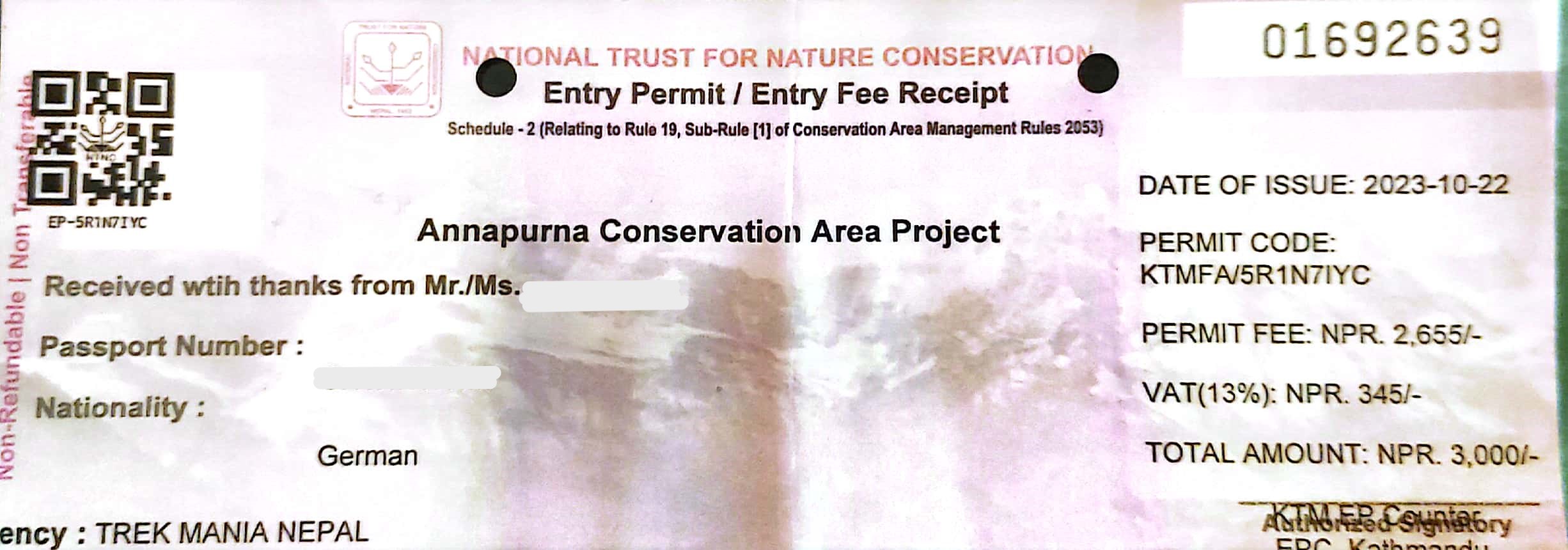
2. Trekker's Information Management System(TIMS):
For hikers in Nepal, the TIMS (Trekker's Information Management System) card is a necessary piece of identification. It was put into place to improve trekkers' safety and security while also assisting authorities in keeping track of travelers in various hiking locations.
Cost: Nrs 3000 per person for non SAARC tourists and Nrs 1000 for SAARC trekers.
3. Climbing permit:
A climbing permit is a legal authorization or license issued by a relevant body or organization to individuals or groups that authorizes them to climb a certain mountain, or designated climbing area. These climbing permits differ according to the region and the governmental agency in charge of the area.
Cost: Climbing permits are priced differently depending on the season. For the months of March, April, and May, the cost is USD $250 due to the ideal conditions of clear and mild weather. On the other hand, during September, October, and November, the permit fee is USD $125 for the autumn season, which is a popular time for Singu Chuli 6501m Climbing. The permit price decreases during the winter and summer months, which are considered off-seasons. Additionally, for December, January, and February, the permit fee is USD $70.
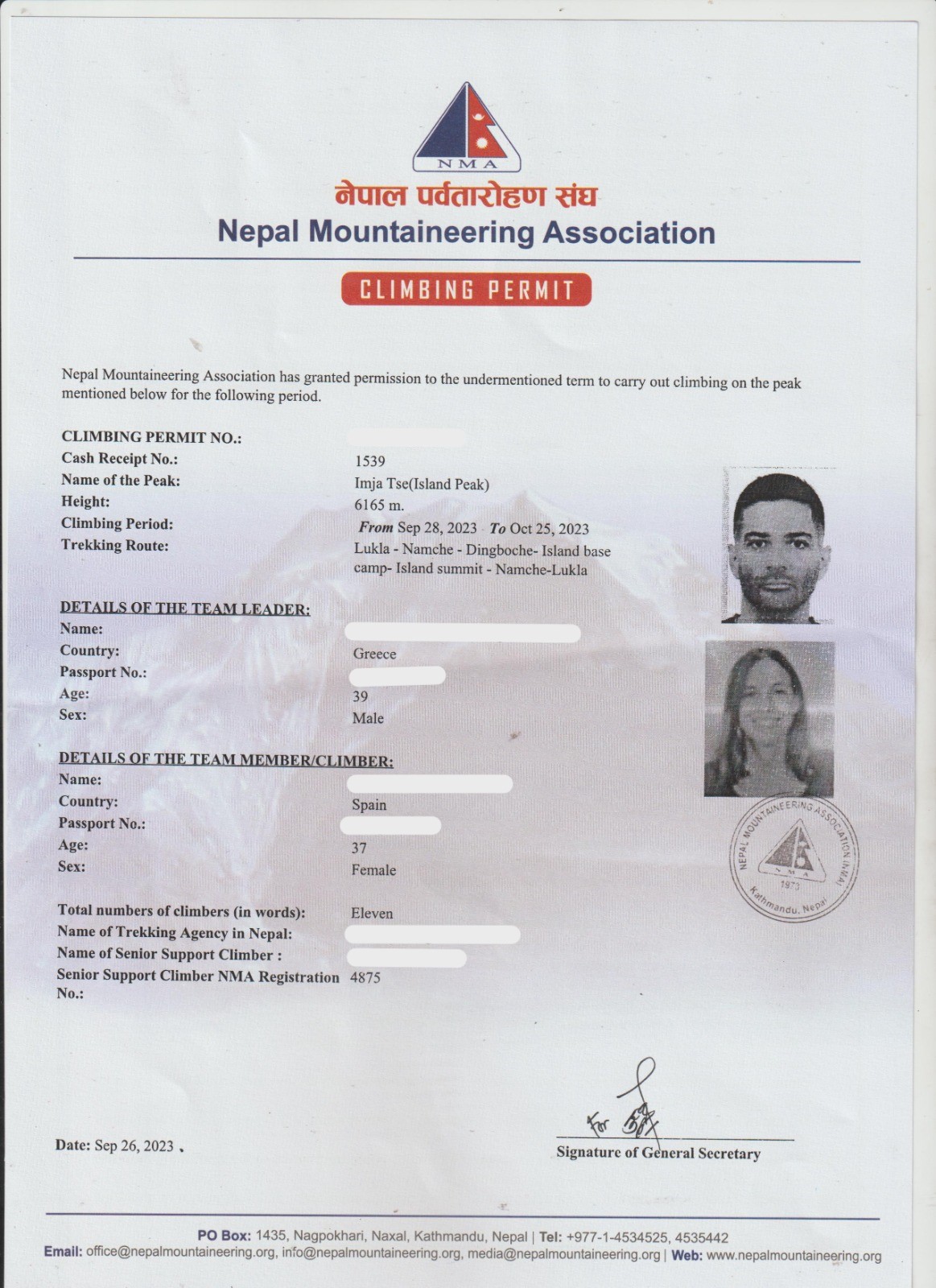
4. Travel insurance:
Peak climbing travel insurance is a specialist sort of travel insurance that provides coverage for those participating in high-altitude mountaineering or climbing expeditions to peaks such as Singu Chuli or other Himalayan summits. This is necessary for safety and is tailored to the unique risks and challenges associated with high-altitude climbing adventures in Nepal.
Necessary documents for Permits:
- You will only need your valid passport photocopy(validity of 6 months).
- Passport-size photos 2p.
- Travel insurance papers (includes helicopter evacuation of up to 6000m)
Highlights
- Breathtaking views of Annapurna I, Annapurna South, Hiunchuli, Machapuchare, and more.
- A technically challenging climb for experienced mountaineers.
- Trekking through the stunning Annapurna Sanctuary.
- Diverse terrain, from lush forests and rhododendron blooms to alpine meadows and glaciers.
- Interaction with local Gurung and Magar communities.
Cost Details
- Deluxe Hotel in Kathmandu 2 nights.
- Kathmandu – Pokhara - Kathmandu.
- Singu Chuli Peak Climbing Permit.
- Annapurna conservation Entry Permit.
- One climbing guide (Sherpa) among two members.
- All Ground transport as per the itinerary.
- All standard Meals (Breakfast, Lunch, and Dinner) throughout the trek and climb.
- Breakfast in Kathmandu.
- Accommodation in a lodge during the trek and basic camping arrangement during climbing.
- A porter for every two passengers (please make your bag 15 kg and around).
- Insurance for every staff.
- Peak Climbing Map
- Emergency Helicopter rescue arrangement if in case (pay by your travel insurance) in the worst case only).
- Sleeping, bag down jackets if you do not have your own, to be returned after the trip.
- First Aid Box carried by the porter.
- Seasonal Fruits throughout the trek.
- Medical supplies, first aid kit box, including Oximeter and pulse meter checker.
- All other government taxes and expenses
- All kinds of Drinks.
- Visa fee to enter Nepal.
- International flight tickets and extra baggage charges.
- Extra night accommodation and meal costs in Kathmandu due to any change in the scheduled itinerary.
- Travel insurance/ Rescue operation costs.
- All personal expenses (laundry, electronic device charging cost).
- All required trekking gear like sleeping bags and down jackets made available on rent.
- Tip for guide and porters.
- Hot and cold Shower.
Equipment List
Checklist for Singu Peak Climbing in Nepal
For Head
· Balaclava that covers your ears
· Headlamp with extra batteries and bulbs
· Bandana or headscarf, very useful for dusty conditions
· Beanie
· Wide-brimmed sunhat
· Neck gaiter or warmer
· Snow goggles and Sunglasses with UV protection (carry an extra pair in case you lose or break it)
· Prescription sunglasses (if required)
For Upper Body
· T-shirt (moisture absorbing and breathable)
· The thermal base layer of merino wool
· Fleece wind-stopper jacket or pullover
· Waterproof (preferably breathable fabric)
· Long sleeve shirt (moisture absorbing and breathable)
· Shell jacket
· Down Vest
· Expedition weight insulated down jacket with hood (not required for all trekking peaks )
· Gore-Tex jacket with hood, waterproof and breathable
For Hands
· A pair of lightweight poly-liner gloves or lightweight wool or fleece gloves
· Summit Mittens (warm insulated gloves with safety straps)
For Lower Body
· Lightweight thermal leggings of merino wool
· Trekking trousers (waterproof, breathable fabric)
· Hardshell trousers
· Non-cotton underwear briefs
· Hiking shorts
· Synthetic insulated pants
For Feet
· Crampons
· Lightweight inner socks, heavy poly or wool socks and cotton socks
· Running shoes and rubber sandals/flip-flops
· Double insulated climbing boots
· Good quality hiking boots (sturdy soles, water-resistant, ankle support, “broken-in”)
· Gaiters
For Sleeping Purpose
· Sleeping Bag ( a 5 season sleeping bag, suitable for temperatures for as low as -40°C)
· Foam pad
· Fleece sleeping bag liner
· Therm-a-Rest sleeping pad (NeoAir XTherm) which offers insulation and warmth in sub-freezing temperatures
· Pillowcase
Personal Climbing Gears
· Ice axe
· Crampons
· Ascender/Jhumar
· Prusik rope
· Helmet
· Harness
· Tape slings (2)
· Screwgate karabiners (2 locks, 2 unlock)
· Descender/eight figure
· Plastic mountaineering boots
Group Climbing Gears
· Snow bar
· Rope
· Ice hammer
· Ice screw
Baggages
· Rucksack and Travel Bags
· A small daypack/backpack(30-40L) for carrying your valuables should have good shoulder padding.
· Large duffel bag (80-100L)
· Small padlocks for duffel-kit bags
· Waterproof covers
Medical
· Small, personal first-aid kit (simple and light)
· Paracetamol
· Cough and/or cold medicine
· Anti-altitude sickness pills - Diamox or Acetylzolamide
· Stomach antibiotic - Ciprofloxacin, etc. Do not bring sleeping pills as they are a respiratory depressant.
· Aspirin, first-aid tape, and plasters (Band-Aids)
· Skin-blister repair kit
· Anti-diarrhea pills
· Throat lozenges
· Water purification tablets or the water filter
· Earplugs
· lip guard
· Eye drops
· Extra pair of prescription glasses, contact lens supplies
· Sunscreen
Practical Items
· Alarm clock/watch
· Camera with extra SD cards and batteries
· Large Ziploc bags
· 2 water bottles (1 liter each)
· Small roll of repair tape, sewing-repair kit
· Binoculars (optional)
· 4 large, waterproof, disposable rubbish sacks
· Socket adapter Type C (with circular pins)
· Cigarette lighter / small box of matches
· Compass or GPS(optional)
· Lightweight steel thermal bottle
· Small folding or Swiss knife
· Trekking poles(foldable)
Toiletries
· Small sachets of shampoo
· Deodorants
· Nail clippers
· Face and body moisturizer
· Female hygiene products
· Small mirror
· Medium-sized quick-drying towel
· Toothbrush/paste (preferably biodegradable)
· Multipurpose soap (preferably biodegradable)
Personal Hygiene
· Anti-bacterial handwash
· Hand sanitizer
· Pee Bottle (1 litre, leak-proof, wide mouth)
· Pee funnel (for female)
· Wet wipes (baby wipes)
· Tissue /toilet roll
Extras/Luxuries
· Reading book
· Trail map/guide book
· Journal and pen
· iPod
· Playing cards (to help you pass the time at teahouses and/or camps)
· A modest swimsuit
· Binoculars (optional)
FAQs
Singu Chuli (6,501m), also known as Fluted Peak, is one of the most technical trekking peaks in Nepal. It involves steep ice walls, mixed rock and ice climbing, and narrow ridges, making it more challenging than peaks like Island Peak or Mera Peak.
Yes. Since Singu Chuli is more technical, prior experience with ice climbing, rope work, and high-altitude trekking is highly recommended. Climbers should be familiar with using crampons, ice axes, harnesses, and fixed ropes.
The best seasons are spring (March-May) and autumn (September-November) when the weather is stable, and climbing conditions are more favorable. Winter can be extremely cold and risky due to heavy snow and harsh winds.
On the approach trek via Annapurna Base Camp, teahouses provide lodging. Beyond that, tented camps are used at high camps, with food prepared by the expedition crew.
Singu Chuli is more technical and physically demanding than Tharpu Chuli (Tent Peak). While Tharpu Chuli is a good introductory peak, Singu Chuli requires advanced climbing skills and more technical maneuvers.




